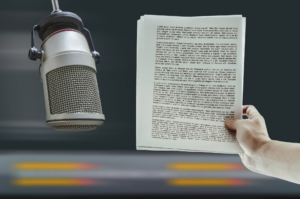As audio engineers, we all understand the importance of sound quality. It can make all the difference in how we perceive music or other audio content by finding the right balance between highs, lows, and mids. One way to achieve this balance is by using an equalizer.
An equalizer is a tool that allows you to adjust the different frequency levels of your music, helping you control the sound. However, choosing the right equalizer can be challenging because they are not all the same. There are several factors to consider, such as the type of music you listen to, the size of the room where you listen to music, the type of speakers you have, and your personal preferences. This article explains these factors and more to help you choose the right equalizer. Whether you are a sound professional or just an enthusiast, understanding these aspects will enable you to achieve the best possible sound quality.
1. Frequency Response Range is the Most Important Element
When it comes to choosing an equalizer for your audio system in 2023, several factors need to be taken into account. One of the most crucial elements to keep in mind is the frequency response range. The primary purpose of an equalizer is to adjust the levels of different frequency bands to achieve more accurate and balanced sound. The frequency response range determines the range of frequencies that an equalizer can adjust, with wider ranges offering greater flexibility in sound adjustment. Therefore, it is essential to choose an equalizer with a wide frequency response range that covers all the frequencies produced by your audio system. This will allow you to make the necessary adjustments to achieve the best possible sound quality. Keep this in mind when choosing an equalizer in 2023 for optimal audio performance.
2. Choose an Equalizer with the Appropriate Channels
When purchasing an equalizer in 2023, it is crucial to consider the appropriate number of channels. The number of channels refers to the number of frequency bands that an equalizer can adjust. Generally, the more channels an equalizer has, the more specific and precise the settings are. However, it is important to choose an equalizer with the number of channels that suits your specific needs. For example, if you are using an equalizer for a stereo audio system, a two-channel equalizer is sufficient. On the other hand, if you are using an equalizer for a home theater system, a seven-channel equalizer would be more appropriate to adjust the sound for each speaker. Therefore, it is essential to determine your specific needs and choose an equalizer with the appropriate number of channels.
3. Parametric Equalizers Offer Precise Control
When choosing an equalizer, it is important to consider the types of available equalizers. Parametric equalizers are becoming increasingly popular among music and sound professionals. They allow you to precisely control different sound frequencies, enabling you to adjust them according to your specific needs. Unlike graphic equalizers, which have fixed frequency bands, parametric equalizers allow you to adjust the frequency, bandwidth, and volume for each frequency. This enables you to correct frequency imbalances and improve the sound quality of an audio track. With the growing demand for sound quality in various fields such as music, film, and gaming, the use of parametric equalizers is expected to continue increasing in popularity in 2023 and beyond.
4. Graphic Equalizers are More Visual
When searching for an equalizer, it is important to shorten sentence length. Graphic equalizers are known for their visual representation of the sound spectrum. Instead of relying solely on hearing, graphic equalizers provide a visual representation of amplified or attenuated sound frequencies. This visual representation makes it easier to adjust the sound and achieve the desired result. In 2023, an increase in the use of graphic equalizers is expected due to their user-friendliness. They allow for precise sound adjustments, even for those without a trained ear. With the visual display of sound, it is easy to identify frequencies that need to be amplified or attenuated to achieve the desired sound. Additionally, graphic equalizers are perfect for those who appreciate the visual aspect of music production.
5. Consider Your Budget and Needs
When choosing an equalizer in 2023, it is important to take into account your budget and needs. Equalizers are available in different price ranges and with varying features, so it is important to determine what you truly require before making a purchase. If you are a professional musician or sound engineer, you may need a high-end equalizer with advanced functions to achieve the desired sound quality. On the other hand, if you are a beginner or using the equalizer for personal purposes, a simpler and more affordable option may suffice. Additionally, consider the type of audio equipment you are using and the type of equalizer that is compatible with your setup. Take the time to research and read user reviews to ensure an informed decision and get the best value for your budget.
In conclusion, you need to consider various factors such as the number of bands, filter type, frequency range, and control level when choosing an equalizer that suits your audio system. Each of these factors plays a crucial role in shaping the sound and achieving the desired tonal balance. Take the time to analyze your audio needs and preferences and explore the different types of available equalizers. This will enable you to choose an equalizer that enhances your listening experience and brings out the best in your music. Remember, a good equalizer is an investment that will improve your sound quality for many years to come.


